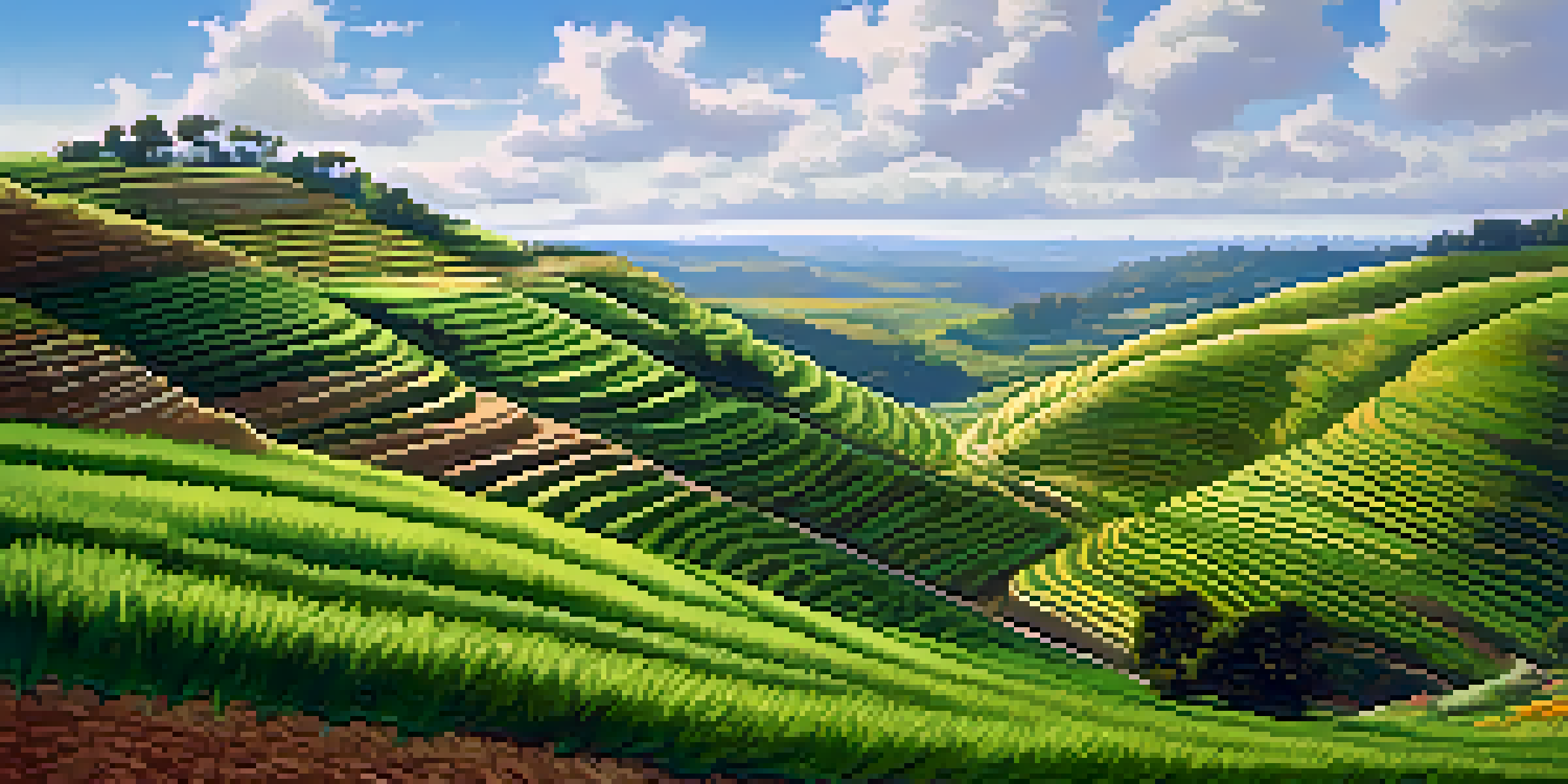Planting Strategies to Mitigate Soil Erosion Effectively

Understanding Soil Erosion and Its Causes
Soil erosion is the process where topsoil is worn away by natural forces like water and wind. It often occurs in areas with little vegetation to anchor the soil, making it vulnerable. Factors such as heavy rainfall, drought, and human activities like deforestation exacerbate this issue and can lead to significant land degradation.
The Role of Ground Cover Plants in Erosion Control
Ground cover plants are excellent for mitigating soil erosion as they create a protective layer over the soil. Their roots bind the soil together, preventing it from being washed or blown away. In addition, they absorb water, reducing runoff and allowing for better water retention in the soil.
Soil Erosion's Key Causes
Soil erosion occurs when topsoil is worn away by natural forces and exacerbated by factors like heavy rainfall, drought, and human activities such as deforestation.
Using Native Plants for Sustainable Erosion Management
Native plants are well-adapted to local climates and soil conditions, making them ideal for erosion control. They typically require less maintenance and water compared to non-native species, which is a bonus for sustainability. By planting native species, you not only combat erosion but also support local wildlife and biodiversity.
Implementing Contour Farming Techniques
Contour farming involves plowing and planting across the slope of the land, rather than up and down. This technique creates natural barriers that slow down water runoff and minimize soil erosion. By following the contours of the land, farmers can utilize the landscape to their advantage, helping to retain moisture and nutrients in the soil.
Ground Cover Plants' Benefits
Ground cover plants play a vital role in erosion control by binding soil with their roots and reducing water runoff.
The Benefits of Agroforestry in Soil Protection
Agroforestry combines agriculture and forestry practices to create more sustainable land use systems. By integrating trees into farming, you can enhance soil stability and reduce erosion. The tree roots help hold the soil in place, while the canopy reduces the impact of raindrops on the ground, further protecting the soil.
Utilizing Cover Crops for Soil Erosion Prevention
Cover crops, such as clover or rye, are planted primarily to protect and enrich the soil rather than for harvest. These crops help to cover the soil during off-seasons, preventing erosion from wind and water. Their roots also improve soil structure and fertility, making them a win-win for both erosion control and agricultural productivity.
Effective Erosion Management Techniques
Techniques like contour farming, agroforestry, and terracing provide sustainable methods to combat soil erosion and enhance soil quality.
Creating Terraces to Combat Soil Erosion
Terracing is a method that involves creating stepped levels on sloped land to slow water runoff and capture moisture. This ancient technique has been used for centuries in various cultures to cultivate sloped terrains. By breaking up the slope into smaller, flat areas, terraces help reduce the speed of water flow and prevent soil loss.
Monitoring and Maintenance for Long-term Success
After implementing these planting strategies, regular monitoring and maintenance are essential to ensure their effectiveness. This may include checking for signs of erosion, assessing plant health, and making necessary adjustments. By staying proactive, landowners can adapt their strategies to changing conditions and maintain healthy, erosion-resistant landscapes.